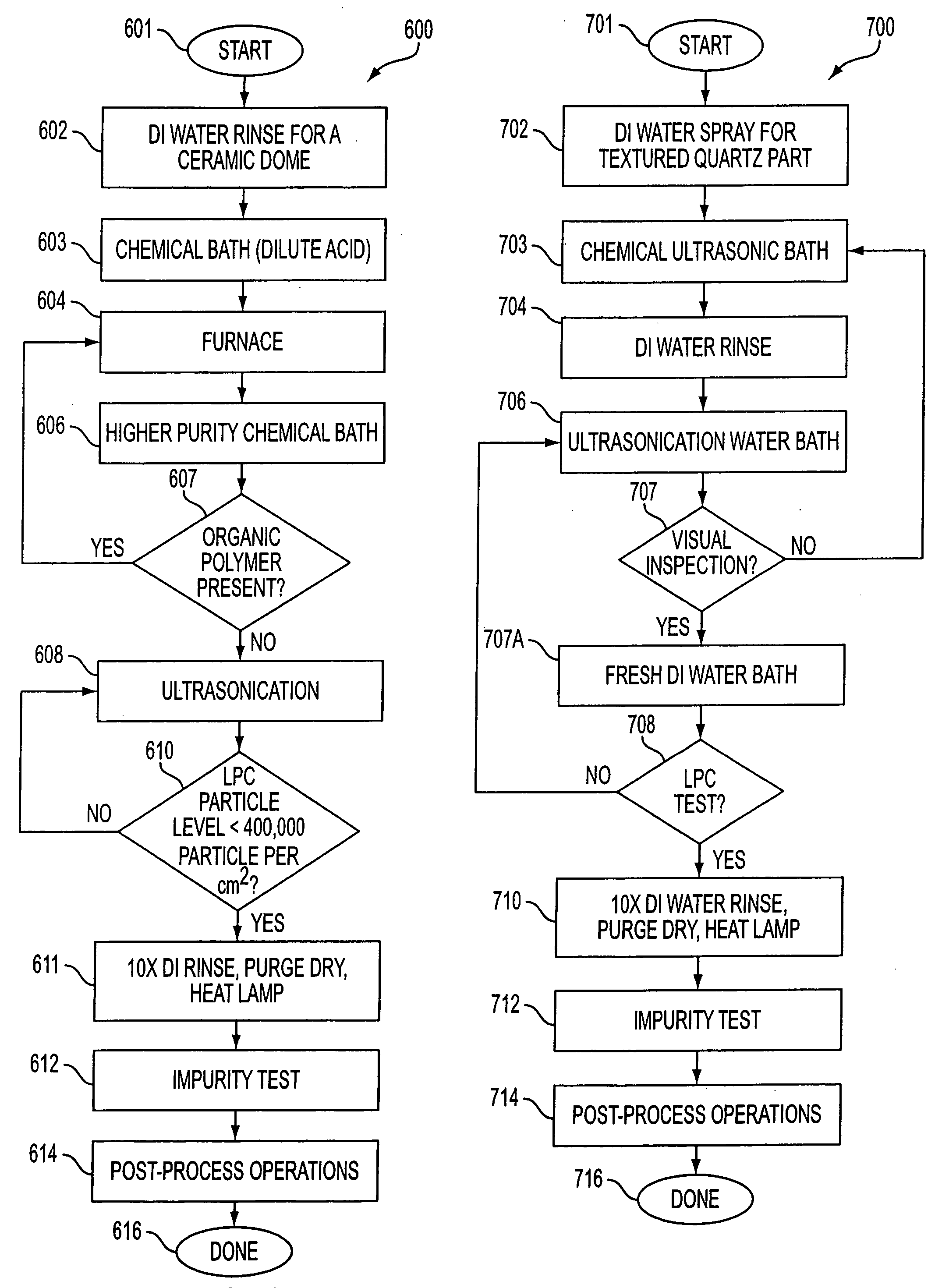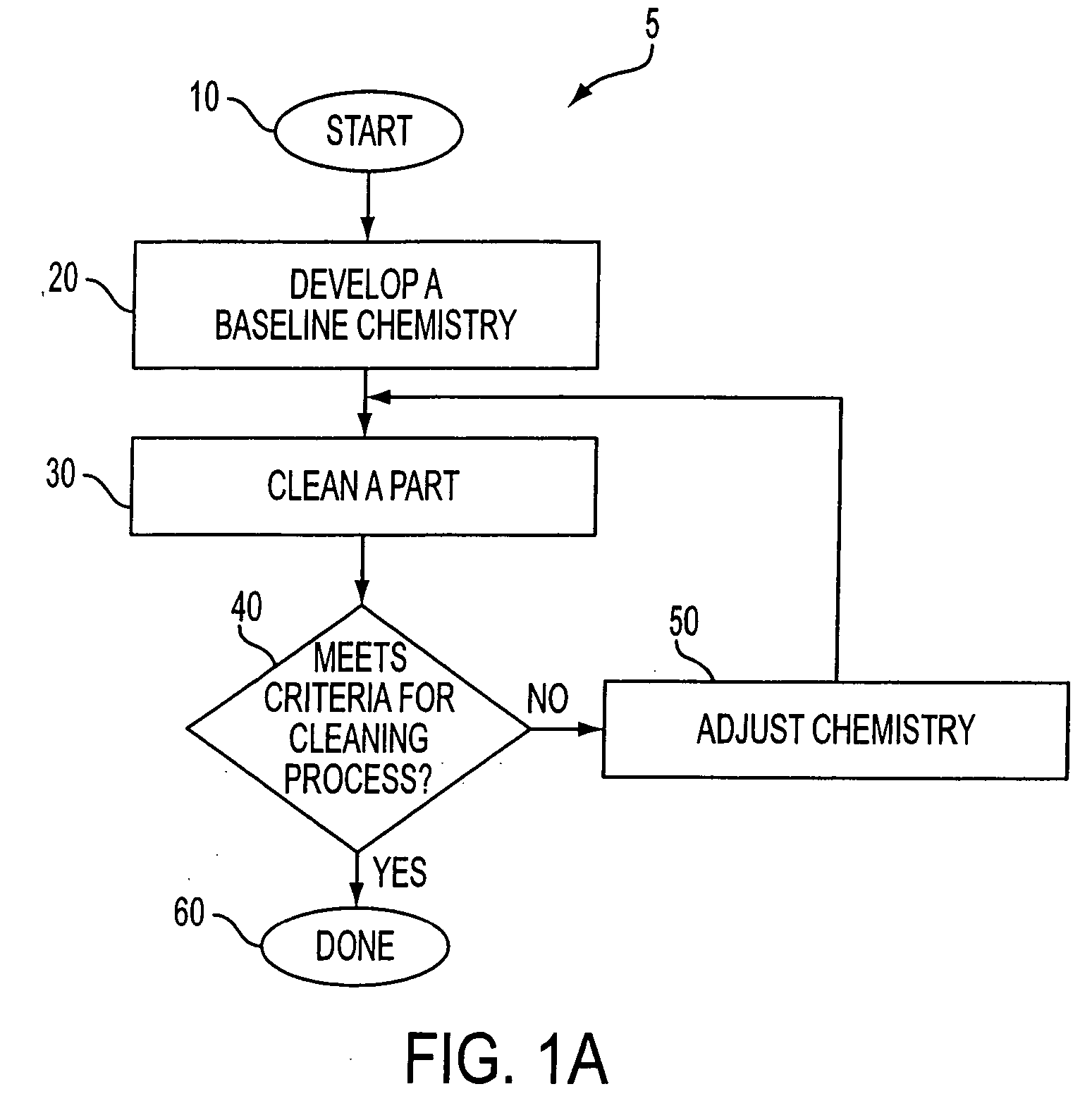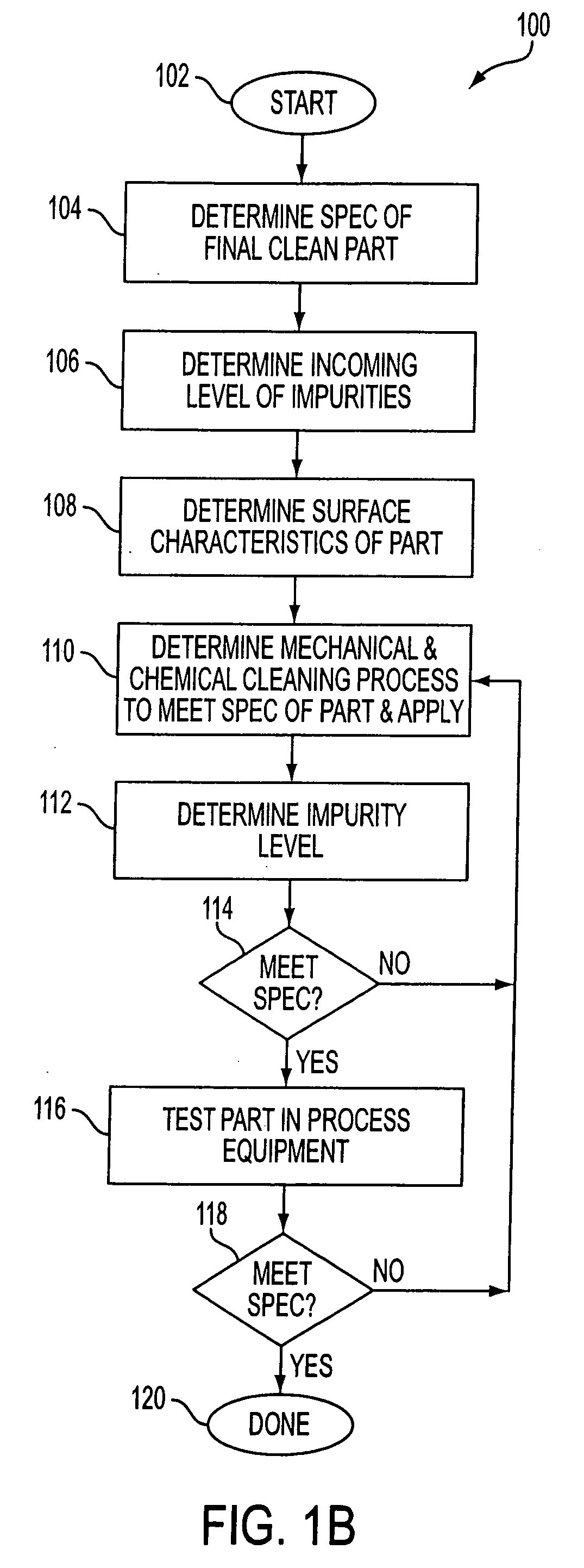System and method for cleaning semicondutor fabrication equipment parts
a technology for fabrication equipment and parts, applied in the direction of cleaning using liquids, inorganic non-surface active detergent compositions, instruments, etc., can solve the problems of contaminated equipment used in the semiconductor processing process, unusable, missed transfers, etc., to reduce cleaning defects, enhance cleaning process, and increase accuracy
- Summary
- Abstract
- Description
- Claims
- Application Information
AI Technical Summary
Benefits of technology
Problems solved by technology
Method used
Image
Examples
Embodiment Construction
[0024] An invention is described herein for cleaning semiconductor equipment parts (such as CVD and etch chamber parts) that achieve increased effectiveness in impurity removal. In the following description, numerous specific details are set forth in order to provide a thorough understanding of the present invention. It will be apparent, however, to those skilled in the art, that the present invention may be practiced without some or all of these specific details. In other instances, well known process steps have not been described in detail in order not to unnecessarily obscure the present invention. In particular, this includes most of the analytical testing methods used to measure or confirm impurity levels.
[0025] In accordance with one aspect of the present invention, the aforementioned metallic impurity removal is substantially enhanced by the use of a new chemical formula in the various cleaning processes. This cleaning formula is particularly novel as applied to the cleaning...
PUM
| Property | Measurement | Unit |
|---|---|---|
| diameter | aaaaa | aaaaa |
| temperature | aaaaa | aaaaa |
| temperature | aaaaa | aaaaa |
Abstract
Description
Claims
Application Information
 Login to View More
Login to View More - R&D
- Intellectual Property
- Life Sciences
- Materials
- Tech Scout
- Unparalleled Data Quality
- Higher Quality Content
- 60% Fewer Hallucinations
Browse by: Latest US Patents, China's latest patents, Technical Efficacy Thesaurus, Application Domain, Technology Topic, Popular Technical Reports.
© 2025 PatSnap. All rights reserved.Legal|Privacy policy|Modern Slavery Act Transparency Statement|Sitemap|About US| Contact US: help@patsnap.com



